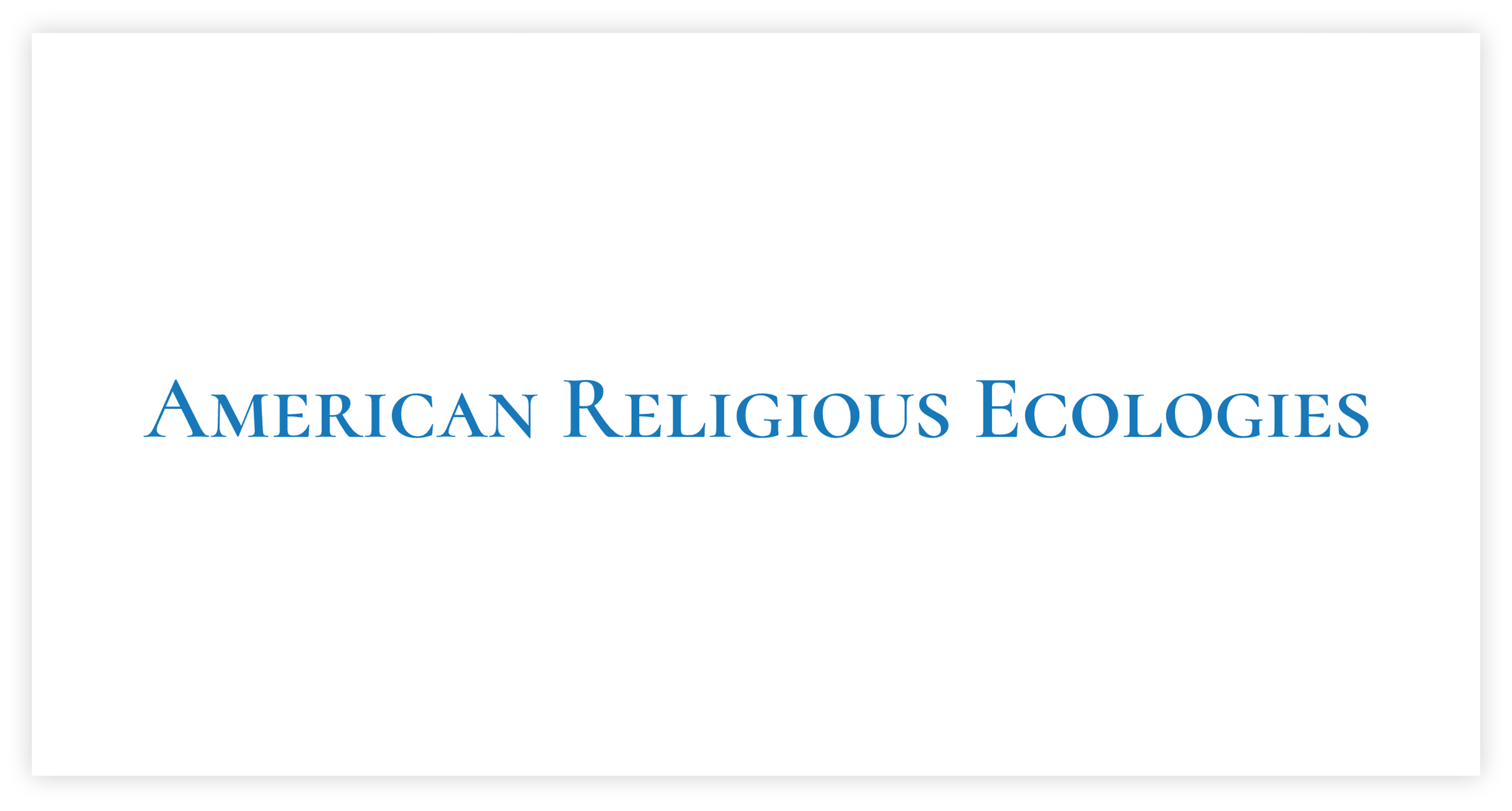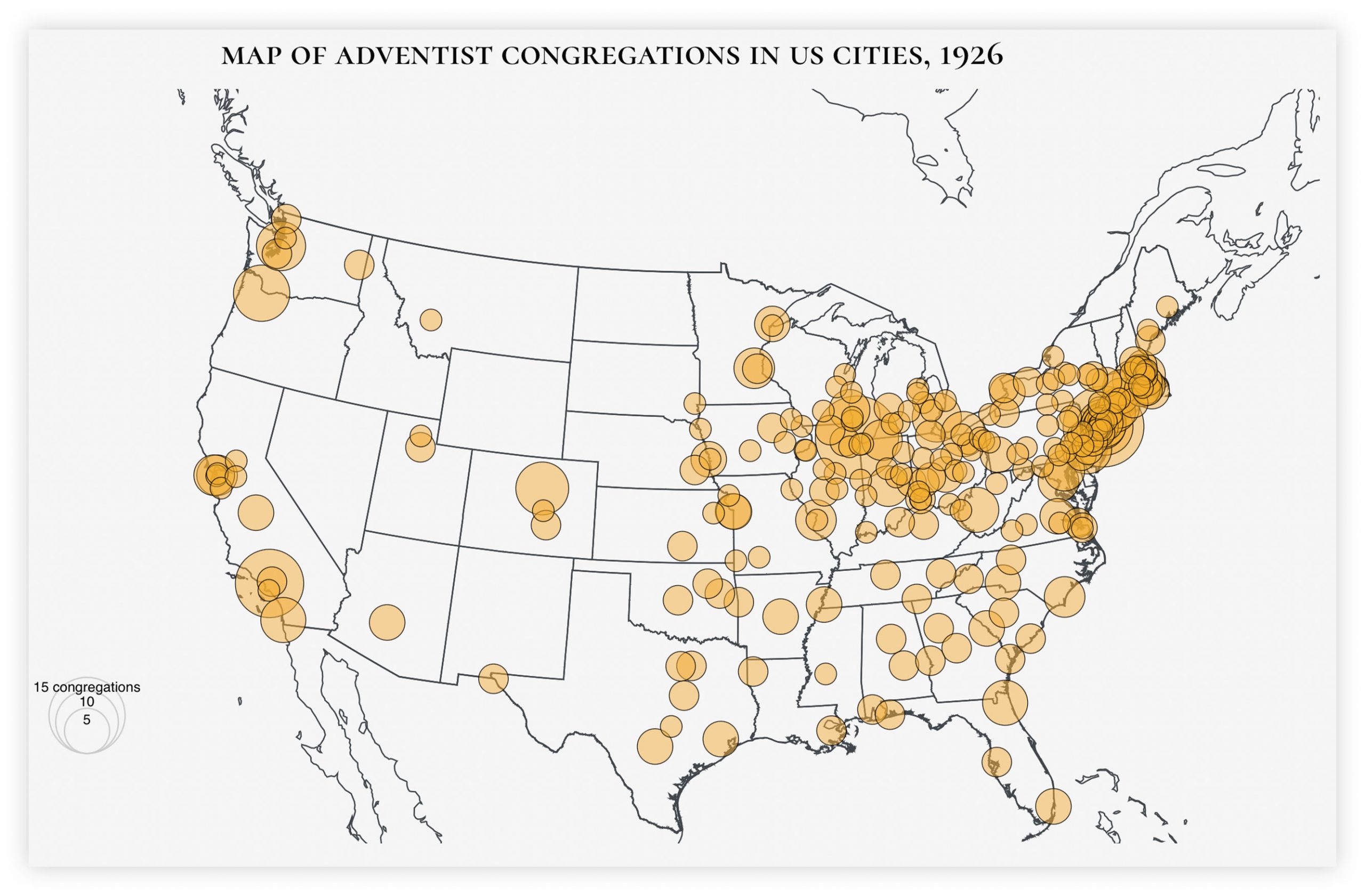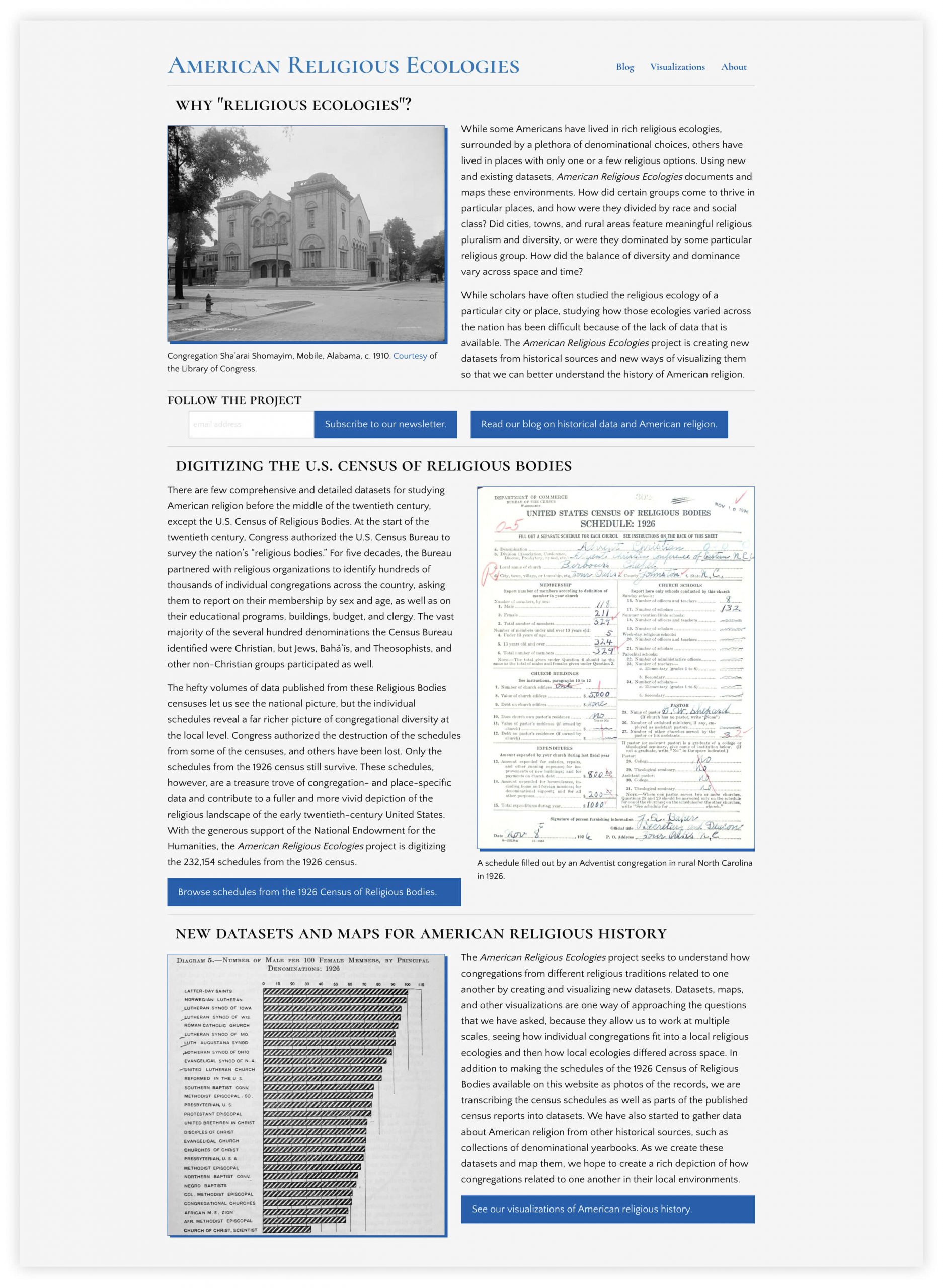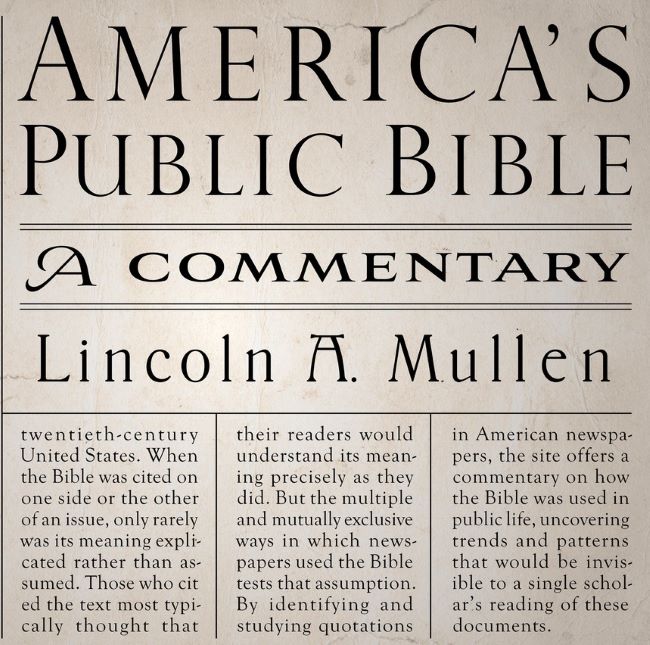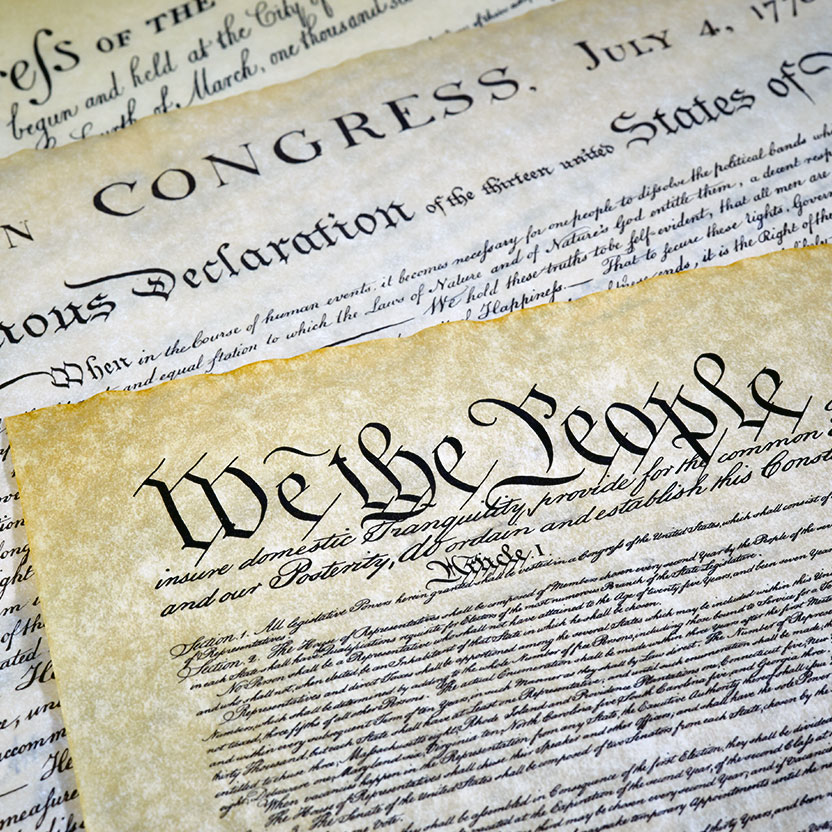American Religious Ecologies
American Religious Ecologies seeks to understand how congregations from different religious traditions related to one another by creating new datasets, maps and visualizations for the history of American religion. While some Americans have lived in rich religious ecologies, surrounded by a plethora of denominational choices, others have lived in places with only one or a few religious options. Using new and existing datasets, this project documents and maps these diverse environments, in order to provide a fuller and more vivid depiction of the religious landscape of the early twentieth-century United States.With the generous support of the National Endowment for the Humanities, the project is currently digitizing approximately 232,000 schedules from the 1926 U.S. Census of Religious Bodies, a treasure trove of congregation- and place-specific data. These schedules will be made available on the project’s website as photos of the records and as a transcribed dataset. The project is also investigating denominational records and other sources of data. Finally the project will use these datasets to create maps and visualizations which offer a rich depiction of how congregations related to one another in their local environments.
April 6, 2022

